Thrusters 101 an unbeatable Full-Body Exercise
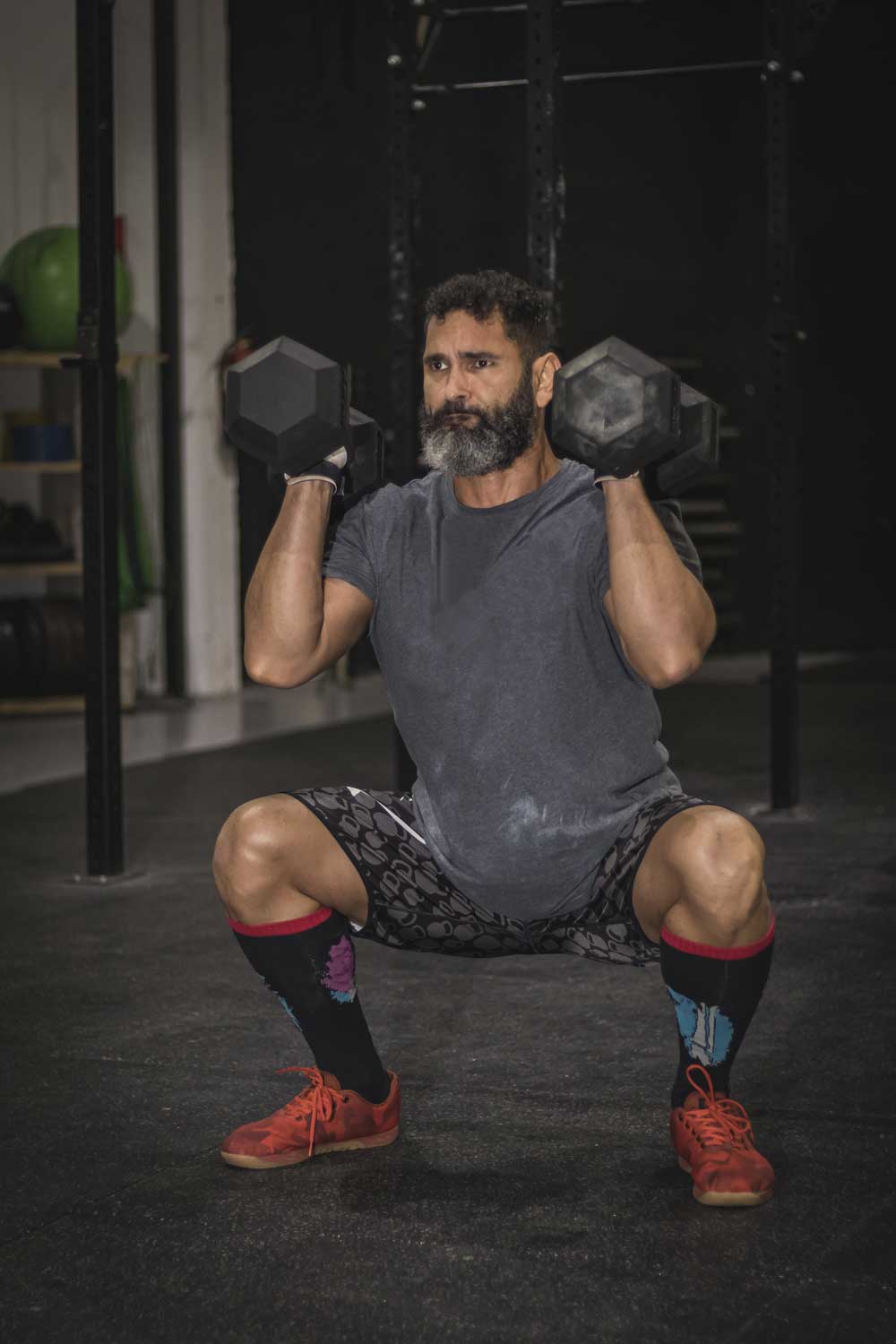
(If you or someone you know has been personally victimized by a thruster workout, the TrainHeroic team offers our sincerest sympathies and condolences to your shattered soul.)

Get Proficient at This Unbeatable Full-Body Exercise
The thruster is essentially a combination of two lifts: the front squat and the push press.
A properly performed thruster needs a solid combination of balance, coordination, flexibility, strength, and endurance. The mechanics of the movement require your major joints to accordion from full flexion to full extension, top to bottom: ankles, knees, hips, shoulders, elbows.
Because of these mechanics, thrusters work most of your major muscle groups including your posterior chain (legs, back, glutes), your upper trunk (shoulders, arms), and your core all at once. Maximum bang for your fitness buck. Also the reason they’ve earned the reputation as being one of the most draining exercises. Like a burpee, but with weight. Awesome.
There’s something special about having to mentally prepare for a big, nasty thruster workout like Fran. The doom of a max-effort thruster session looming in your future is like making it to a final boss. You know it’s going to take all your effort, skill, and lung capacity to conquer the workout.
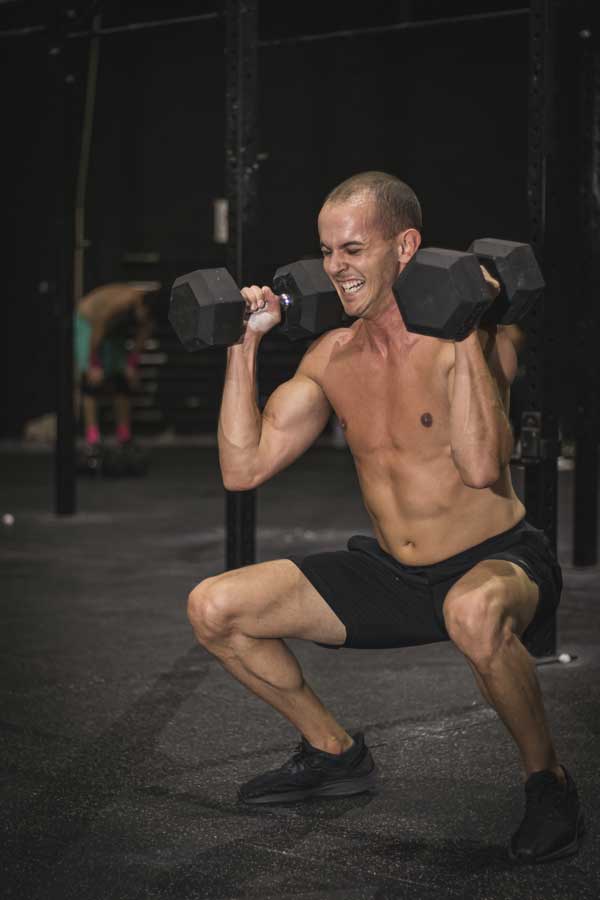
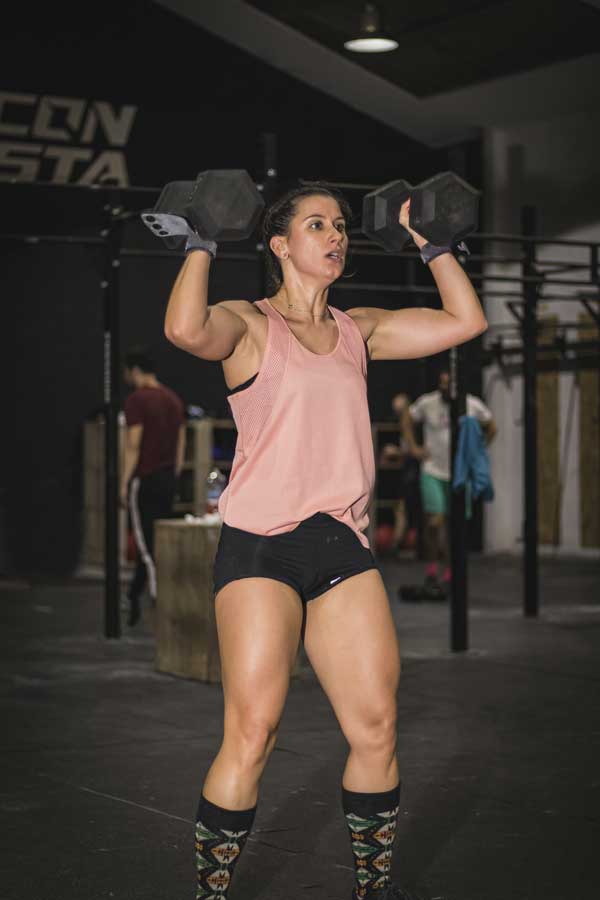
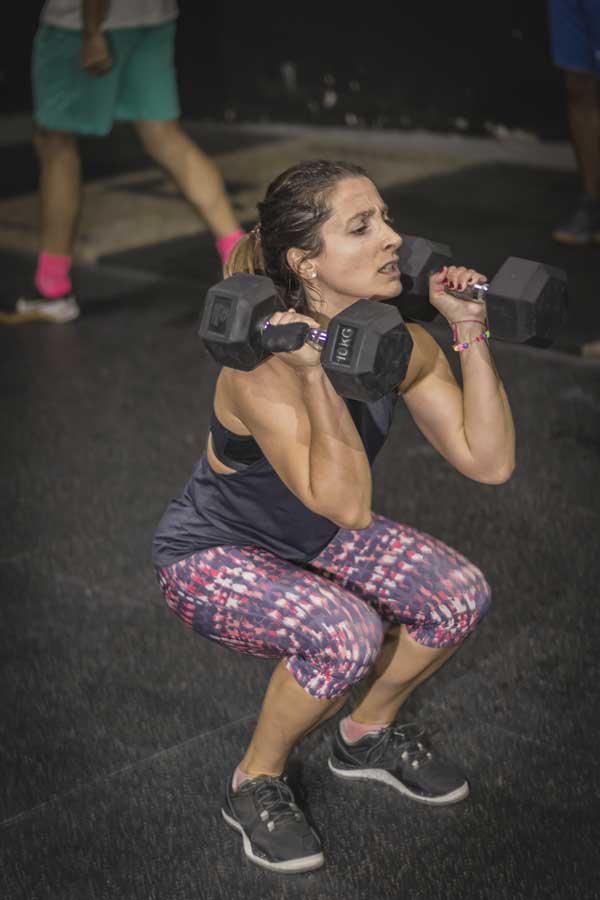
Did you know – faces of pure joy are a side-effect of thrusters!
Any Load Counts!
If you have very few equipment options and no time to do anything else, a workout of 50 thrusters will get your heart pumping and your muscles fatigued. Since you can do a thruster with a huge variety of equipment, they’re versatile and easy to program on days you’re pressed for time or can’t get to the gym.
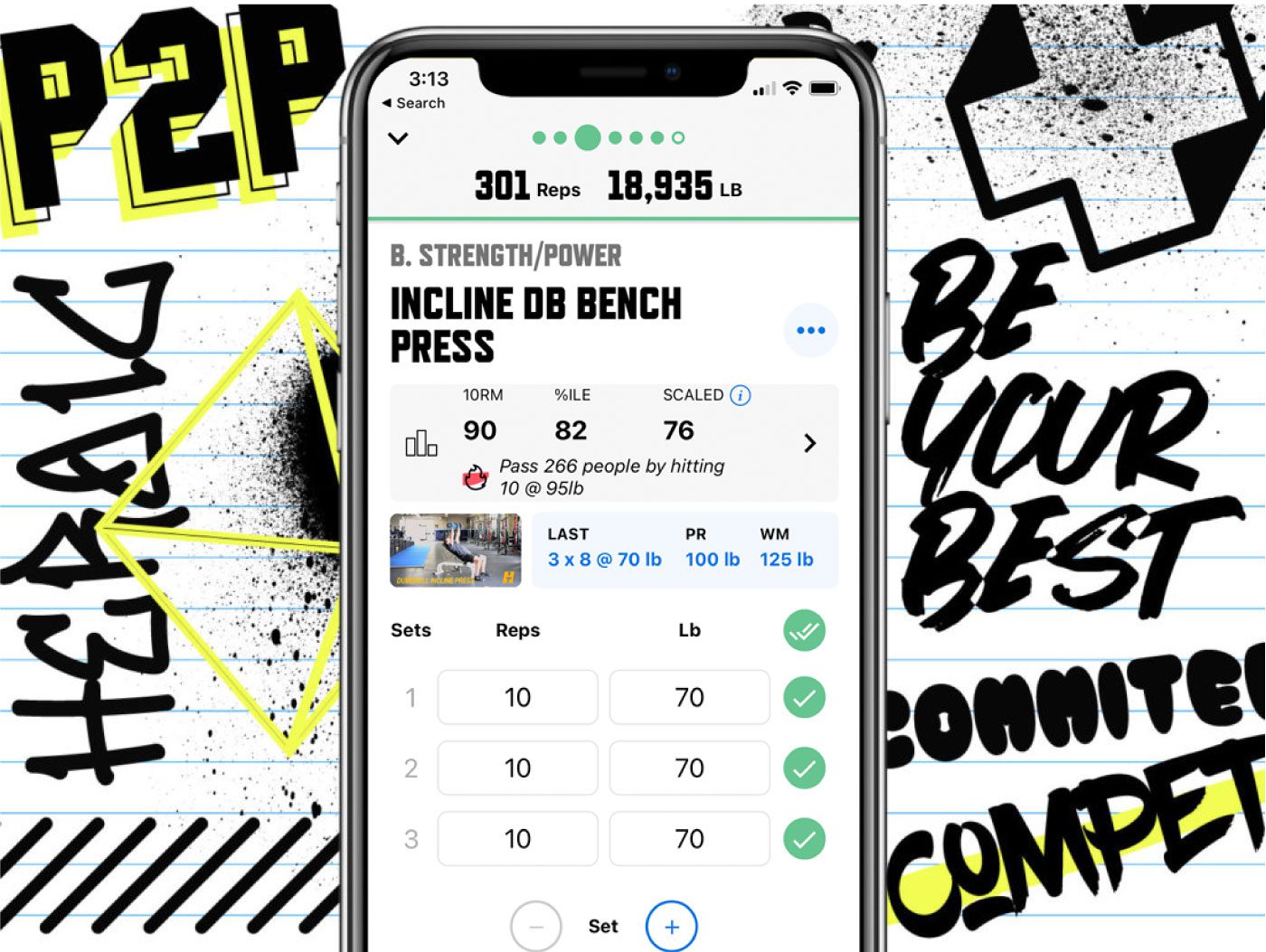

trainheroic’s
free APP
How to do a Barbell Thruster
Points of Performance
Setup
There are two different ways to set up a thruster with a barbell: from the squat rack or more commonly, from the floor. Whatever your setup, the movement itself starts when the bar is resting across your shoulders in the front rack position.
If the barbell is in a squat rack, it should be set at about chest height. Step up and unrack it like you would for a front squat, being sure to use the Olympic clean grip (not the Macarena grip). Grip the bar just outside shoulder width with an overhand grip, then drive your elbows through to the other side of the bar. The bar should end up resting across the top part of your palms with your elbows pointing forward.
If the bar is on the floor, you’ll need to power clean it up to your front rack. Find your squat stance with your feet about shoulder width and your toes pointing straight ahead or slightly turned out.
Squat
Take a breath to brace your core and with a neutral spine hinge at the waist to sit your butt back into a squat. Your thighs should reach parallel to the floor or deeper. Keep your knees in line with your toes, your chest up, and eyes forward.
Press
Push your feet into the floor and squeeze your glutes to come up out of the squat fast. Use the speed of your hip extension and leg drive to help press the bar overhead. Try to time the movement so you initiate the press as your knees straighten. Your upper body takes over to finish the press when your elbows reach full extension and your biceps are beside your ears.
Coach’s Tip: Don’t move the bar out and around your head, but tuck your chin out of the way until the bar passes your forehead. Your head should move back between your arms as your elbows lock. You want the bar path to be over your midfoot for the entire lift.
Receive
From the overhead lockout position, bend your elbows and control the bar back down to catch it in your front rack. If you’re linking multiple god-forsaken reps together, this is where you immediately flow into the next squat and start praying.
But how do you breathe during a thruster?
Cycling your breathing through high-volume sets of thrusters or wallballs is a real challenge. Plenty of athletes just don’t breathe at all, then wonder why they’re dying after a few reps. Forgetting to breathe properly is a common fault for thrusters, because bracing with your breath creates core stability for load-bearing movements.
Pay attention to your breathing. Aim to exhale as you extend your arms into the press, then take your next inhale as you bend your elbows to receive the bar for your next rep. This goes for all thruster variations—exhale and inhale at the top of the movement. This breathing cycle allows you to keep a tight core for the full squat.
The TrainHeroic marketplace is the only place to purchase programming from the World’s best coaches, delivered through the immersive training experience of the TrainHeroic app.
Browse from thousands of programs for any goal and every type of athlete.
Or, join a monthly programming membership to connect with a real coach and community of athletes training just like you. Try any programming subscription free for 7 days.
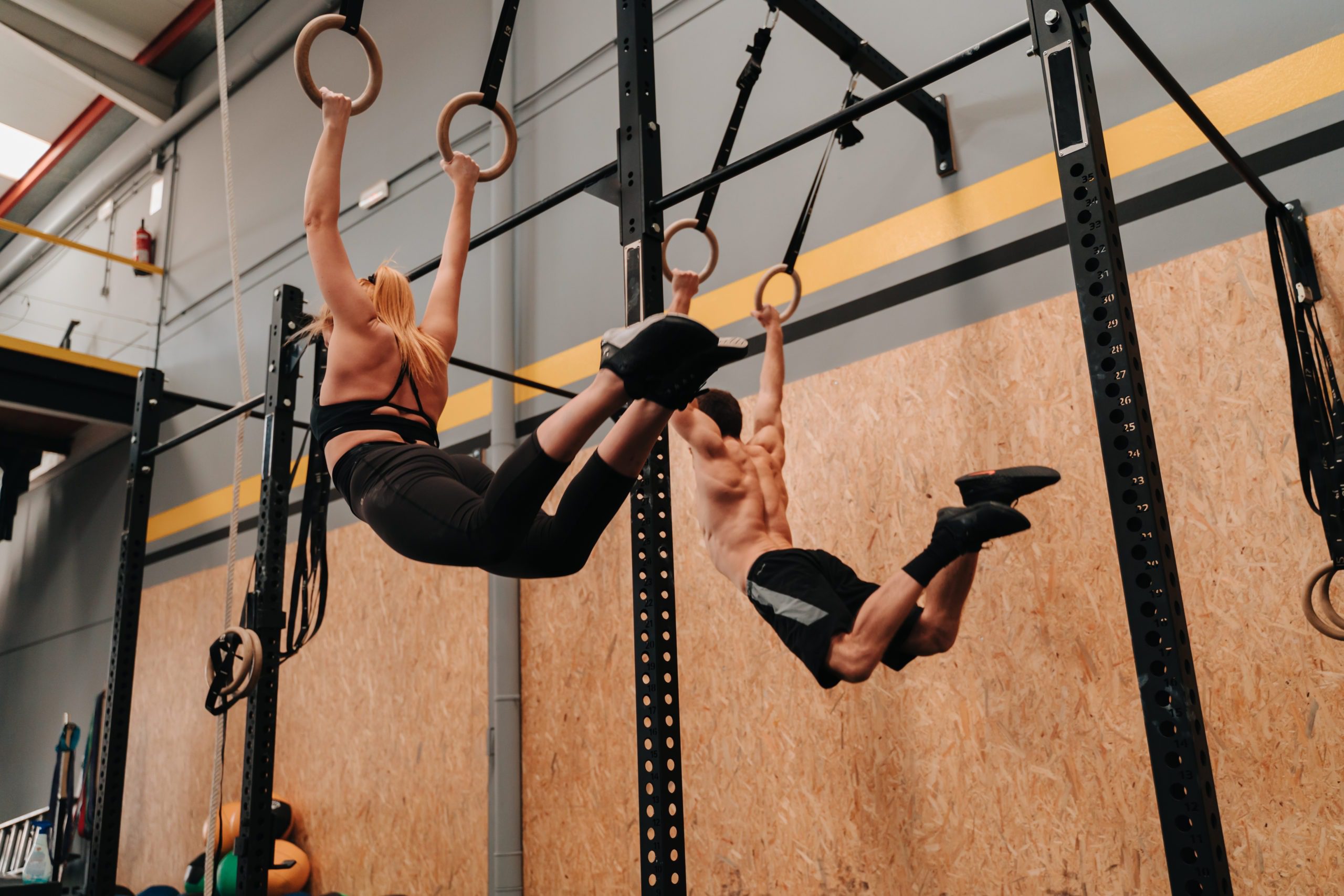
Fun Thruster Variations
P.S. If you want to lose a friend for life, be sure to make them do Karen for their first CrossFit metcon.
Bonus: use odd objects
Happy thrustering, Heroes.

Lily frei
Lily is TrainHeroic’s Marketing Content Creator and a CF-L1 with an English background. She was a successful freelance marketer for the functional fitness industry until being scooped up by TrainHeroic. An uncommon combo of bookish, artsy word-nerd and lifelong athlete, Lily is passionately devoted to weightlifting, CrossFit, yoga, dance, and aerial acrobatics. Find her showcasing her artist-athlete hobbies on IG @lilylectric.

Join the community
Sign up for the latest training news and updates from TrainHeroic

About TrainHeroic
Support
Made with love, sweat, protein isolate and hard work in Denver, CO
© 2021 TrainHeroic, Inc. All rights reserved.


